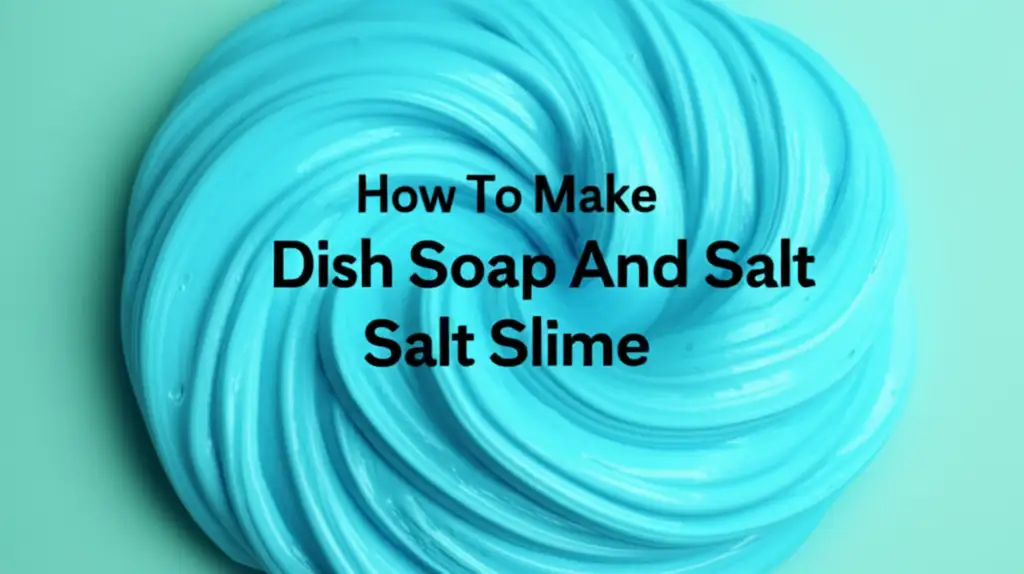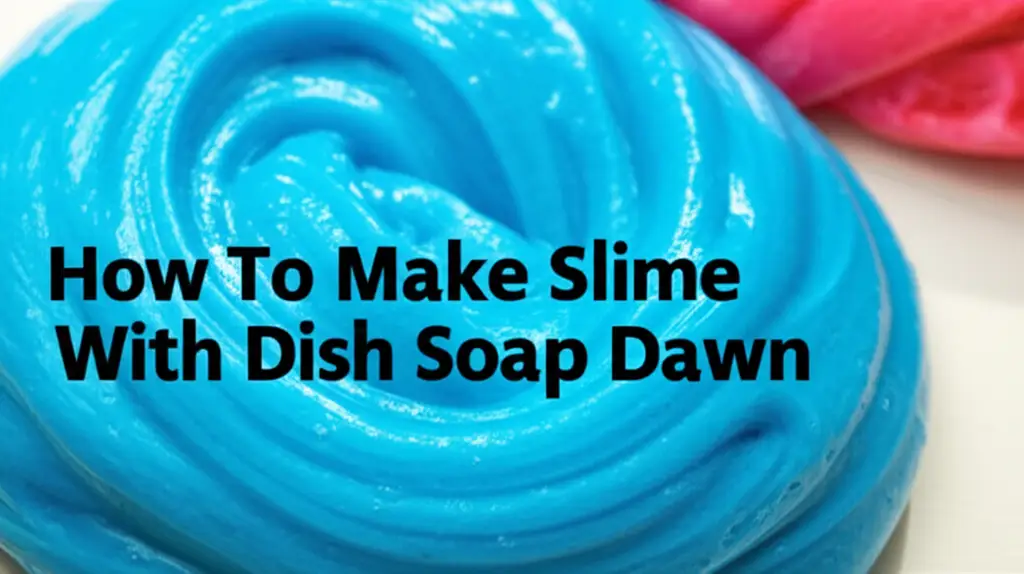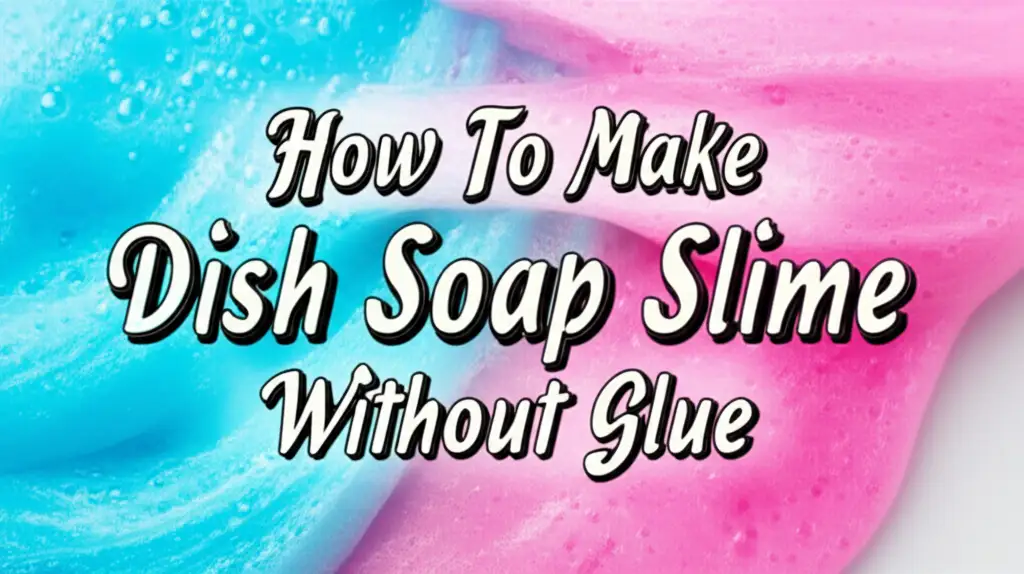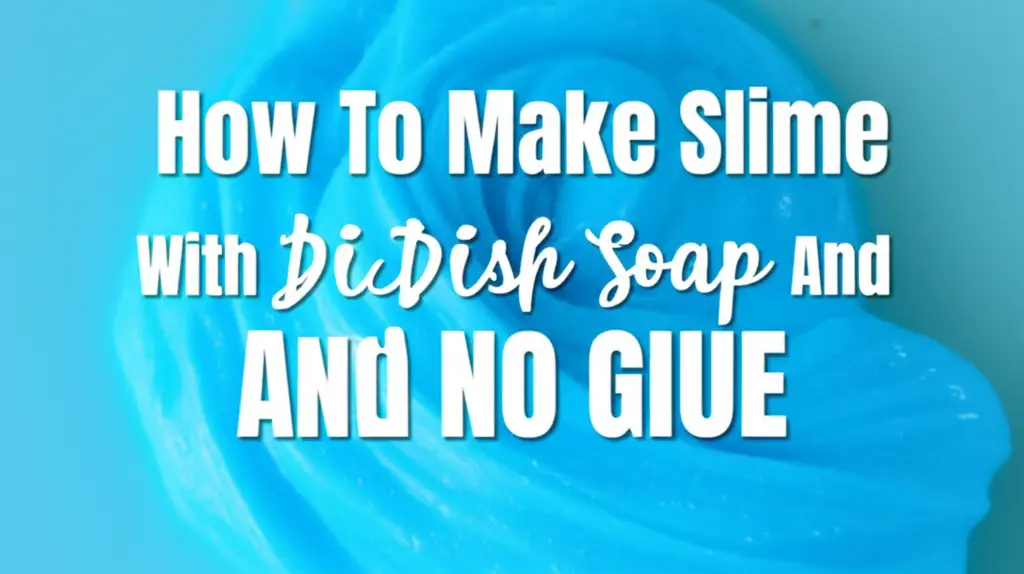· Todd Martin · Kids Activities · 19 min read
How To Make Slime With Laundry Detergent No Glue
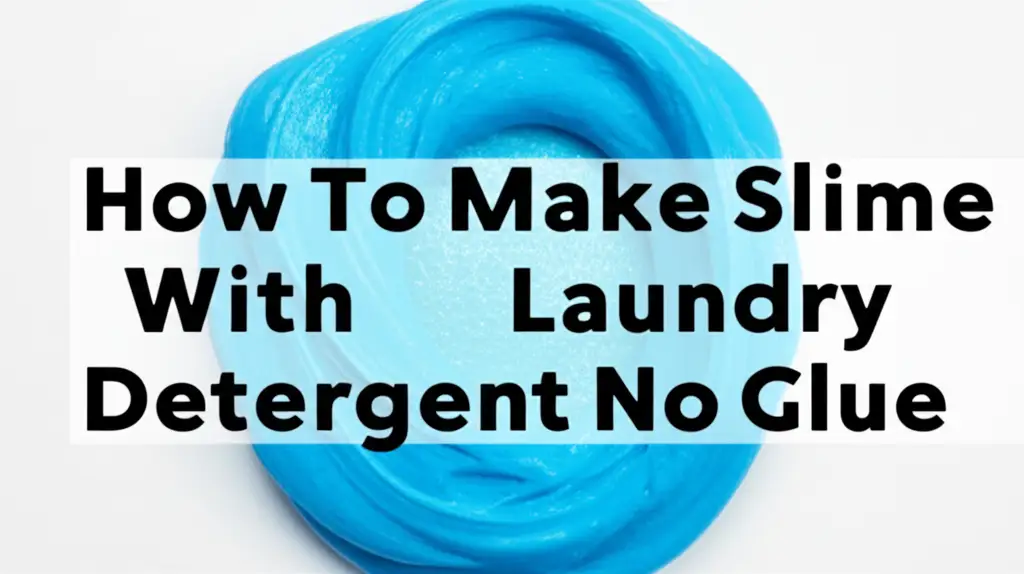
Crafting Fun: How To Make Slime With Laundry Detergent No Glue
Do you want to make slime without needing glue? Many people wonder if this is possible. You can create amazing, stretchy slime using common laundry detergent. This method bypasses the need for traditional school glue. It offers a fun, alternative way to engage in sensory play.
This article shows you how to make slime with laundry detergent and no glue. We cover the necessary ingredients and simple steps. You will learn tips for perfect consistency and customization ideas. We also provide important safety advice and storage tips. Get ready for a new slime-making adventure!
Takeaway:
- Make vibrant, stretchy slime using just laundry detergent and a few household items.
- Achieve perfect slime consistency with easy-to-follow steps and troubleshooting tips.
- Ensure safe and enjoyable slime play by following important safety guidelines.
You can make slime with laundry detergent and no glue by combining liquid starch (found in most liquid laundry detergents) with PVA-based solutions, often found in ingredients like dish soap or even by reacting laundry detergent directly with a liquid polymer like shampoo or body wash. The detergent acts as an activator, creating a stretchy, non-sticky substance.
The Science Behind Laundry Detergent Slime
Making slime without glue sounds like magic, but it involves simple chemistry. Laundry detergent contains specific chemicals that react with certain ingredients. These ingredients often include polymers. When polymers meet an activator like laundry detergent, they connect. This connection creates a stretchy, gooey substance.
Most laundry detergents contain borate ions or similar compounds. These compounds act as cross-linking agents. They link the long chains of polymer molecules together. This process forms the slime’s unique texture. It transforms a liquid mixture into a semi-solid, stretchy material. This is the secret to making slime with laundry detergent and no glue.
Not all laundry detergents work the same way. Different brands have different formulations. Some detergents contain the right chemicals for activating slime. Others may not have enough of these agents. This means success depends on the specific detergent you use. You might need to experiment a bit to find a good one.
The main ingredient reacting with the detergent is usually a type of polymer. Common household items like shampoo, body wash, or even some types of hand soap contain these polymers. When mixed, the detergent helps these polymers bind together. This binding creates the elastic structure of slime. Understanding this simple reaction helps you troubleshoot. It also helps you choose the best ingredients for your homemade slime.
Essential Items for No-Glue Detergent Slime
Getting ready to make slime is easy when you have the right supplies. You do not need many items. Most of these are already in your home. Collecting everything first makes the process smooth. It helps you focus on the fun of creation.
Here is what you will need for your no-glue laundry detergent slime:
Liquid Laundry Detergent: This is your primary activator. Brands like Tide, Gain, or Persil often work well. Look for detergents containing borax or borate ions. Some brands, like Xtra laundry detergent, are known for being effective in slime making. Using a small amount at first is a good strategy. You can always add more if needed.
A Base Liquid (containing polymers): This is the main ingredient that becomes slime.
- Shampoo: Many shampoos work well due to their polymer content. Choose a thicker shampoo for better results.
- Body Wash: Similar to shampoo, body wash can be a great base.
- Dish Soap: Some dish soaps can work, but their consistency varies. For more ideas on how to make slime with dish soap and no glue, you can explore other recipes like how to make slime out of dish soap no glue or how to make slime with dish soap and no glue. A combination of dish soap and baking soda can also yield good results, as seen in how to make slime with dish soap baking soda.
Mixing Bowl: Use a bowl that is easy to clean. A plastic or glass bowl works best.
Mixing Spoon or Stick: A spoon, spatula, or craft stick is perfect for stirring.
Measuring Spoons: You need these for accurate ingredient amounts. This helps ensure proper consistency.
Optional Add-ins:
- Food Coloring: Add a few drops for vibrant colors.
- Glitter: For extra sparkle and fun.
- Essential Oils: A drop or two for a pleasant scent.
- Small Beads or Sequins: For added texture.
Having these items ready will make your slime-making experience simple and enjoyable. You will be surprised how easily these everyday products transform into stretchy, fun slime.
Step-by-Step Slime Creation: No Glue Needed
Creating your own no-glue slime is a straightforward process. Follow these steps carefully to ensure the best results. Remember, small adjustments can make a big difference in the final consistency. This method prioritizes simplicity and effectiveness.
Step 1: Prepare Your Workspace
First, find a clean, flat surface. Cover it with newspaper or a plastic mat. This protects your table from spills. Slime making can be a bit messy. Prepare your mixing bowl and spoon. Have all your ingredients measured and ready. This makes the next steps quick and easy.
Step 2: Combine Your Base Liquid
Pour your chosen base liquid into the mixing bowl. Start with about 1/4 cup of shampoo, body wash, or dish soap. A thicker base liquid generally yields better results. If you are experimenting, a smaller amount helps you learn the process. You can always make more later.
Step 3: Add Your Custom Touches (Optional)
Now is the time to add color or glitter. If you want colored slime, add 1-2 drops of food coloring to your base liquid. Stir it well until the color is evenly mixed. For sparkling slime, sprinkle in some glitter. You can also add a drop of essential oil for scent. Mix these add-ins thoroughly before the next step.
Step 4: Slowly Incorporate Laundry Detergent
This step is crucial for success. Add laundry detergent to your base liquid very slowly. Start with just one teaspoon of liquid laundry detergent. Pour it into the base mixture. Immediately begin stirring vigorously. You will notice the mixture starting to thicken.
Continue adding detergent, a half teaspoon at a time. Stir continuously after each addition. Watch the consistency closely. The mixture will begin to pull away from the sides of the bowl. It will look less like liquid and more like a soft, sticky blob. This gradual addition prevents the slime from becoming too stiff or crumbly.
Step 5: Knead Your Slime
Once the mixture forms a cohesive mass, remove it from the bowl. Place it onto your prepared surface. Begin to knead the slime with your hands. It might be sticky at first. Keep kneading it. The warmth of your hands helps the ingredients combine further.
If the slime is too sticky, dip your fingers in a tiny bit more laundry detergent. Knead it into the slime. If it is too stiff, add a very small amount of your base liquid (shampoo, etc.). Knead until it reaches your desired stretchy, non-sticky texture. This kneading process typically takes a few minutes. It helps distribute the activator evenly. Enjoy the process of transforming liquids into a fun, pliable material.
Mastering Slime Consistency: Tips and Troubleshooting
Achieving the perfect slime consistency can feel like an art. It needs a good balance of ingredients. Sometimes, your first attempt might not be exactly right. Do not worry! Adjustments are easy to make. Understanding how to fix common issues helps you master homemade slime.
If Your Slime is Too Sticky
Sticky slime is a common issue. It means there is not enough activator. The polymers have not fully cross-linked. Here is how to fix it:
- Add More Detergent Gradually: Take a tiny amount of laundry detergent. Add it to your slime. Knead the slime thoroughly. Repeat this process in very small increments. Too much detergent at once makes the slime stiff.
- Knead More: Sometimes, sticky slime just needs more kneading. The act of kneading helps distribute the activator. It also helps the molecules bond properly. Keep working it with your hands for a few more minutes.
If Your Slime is Too Stiff or Breaks Easily
Stiff or crumbly slime has too much activator. The polymer chains have linked too tightly. This makes the slime lose its stretchiness. Here is what to do:
- Add More Base Liquid: Introduce a small amount of your chosen base liquid (shampoo, body wash, etc.). Add just a few drops. Knead it into the slime. Continue adding tiny amounts and kneading until the slime softens.
- Add Water (Sparingly): A few drops of water can help if the base liquid is too thick. Be very careful. Too much water will make the slime runny.
- Patience is Key: It takes time to work liquids into stiff slime. Knead slowly and persistently.
General Tips for Success
- Start Small: When trying a new recipe or detergent, begin with small batches. This way, you do not waste materials if it does not work.
- Measure Accurately: Use measuring spoons for consistent results. Eyeballing amounts can lead to uneven textures.
- Experiment with Detergents: Different laundry detergents have varying levels of activators. If one brand does not work, try another. Brands like Tide, Gain, or Persil are often reliable.
- Test Small Pieces: When adjusting, pull off a small piece of slime. Add the fix to that piece. If it works, apply the fix to the whole batch.
- Warmth Helps: A slightly warm environment or warm base liquid can sometimes help. However, avoid anything too hot.
By following these tips, you will soon become a pro at creating perfectly textured slime. The trial and error process is part of the fun. It teaches you about the material.
Personalizing Your Homemade Laundry Detergent Slime
Creating slime is fun. Personalizing it makes it even more special. You can add unique touches to your homemade laundry detergent slime. These additions make your slime visually appealing and engaging for the senses. It lets you express your creativity.
Adding Color
Color transforms plain slime into something vibrant. You can use various coloring agents:
- Food Coloring: This is the easiest option. Add 1-3 drops to your base liquid before mixing in the detergent. Stir well to distribute the color evenly. You can mix colors to create new shades. For example, blue and yellow make green.
- Acrylic Paint: A tiny squeeze of acrylic paint also works. It provides rich, opaque colors. Be careful not to add too much. A small amount goes a long way. Too much paint can change the slime’s texture.
- Washable Markers: You can draw on the slime with washable markers. Then knead it in. This is a less messy way to add color. It creates a marbled effect before fully blending.
Incorporating Texture and Sparkle
Texture adds another dimension to slime play. It makes the slime more interesting to touch and look at.
- Glitter: Glitter is a classic slime add-in. Sprinkle a generous amount into your base liquid or while kneading. Fine glitter gives a shimmer. Chunky glitter offers more sparkle.
- Microbeads: Small foam or plastic microbeads add a satisfying crunch. Stir them into the slime during the kneading stage. They create a unique sensory experience.
- Small Sequins or Confetti: These add pops of color and shape. They also provide interesting textures. Mix them in carefully to avoid tearing the slime.
Infusing Scents
Slime can engage more than just sight and touch. Scented slime adds an olfactory element.
- Essential Oils: Add 1-2 drops of essential oil to your base liquid. Lavender, peppermint, or citrus scents work well. Choose scents that are safe for skin contact.
- Extracts: Vanilla or almond extract can also add a pleasant smell. Use a very small amount. Remember, these are not meant for consumption.
When adding any new ingredient, introduce it slowly. See how it affects the slime’s texture. Start with a small amount. You can always add more. Personalizing your slime makes each batch unique. It enhances the play experience for everyone.
Safety First: Important Slime Play Considerations
While making slime with laundry detergent is fun, safety comes first. Laundry detergent and other ingredients are chemicals. They require careful handling. Ensuring a safe environment for slime play protects everyone involved. Always supervise children during the slime-making process and while they play.
Hand Hygiene
- Wash Hands Before and After: Always wash hands with soap and water before starting. This keeps your slime clean. Wash hands thoroughly immediately after playing with slime. This removes any detergent residue from skin.
- Avoid Contact with Eyes and Mouth: Slime ingredients are not for consumption. Keep hands away from eyes and mouth during play. In case of accidental contact, rinse thoroughly with water. If irritation persists, seek medical advice.
Ingredient Precautions
- Handle Detergent Carefully: Laundry detergent can be an irritant. Avoid direct skin contact with undiluted detergent for prolonged periods. Use gloves if you have sensitive skin. Store detergent out of reach of small children and pets.
- Adult Supervision: Children should always have adult supervision during slime making. Adults should handle the laundry detergent directly. This ensures correct measurements and safe mixing.
- Ventilation: Work in a well-ventilated area. This helps disperse any strong odors from the detergent.
Cleaning Up Slime
Slime can be messy, but cleaning it does not have to be hard. Prompt cleanup prevents stains and damage.
- Play on Protected Surfaces: Always play with slime on a non-porous, protected surface. Use a plastic mat, baking sheet, or old newspaper. This prevents slime from sticking to furniture or carpets.
- Remove Slime Promptly: If slime gets on fabric or carpet, remove it immediately. Scrape off as much as possible. For tips on specific surfaces, you might find guides like how to clean slime off couch or how to clean up slime from your dining table useful.
- Cleaning Tools: Use a damp cloth or sponge for sticky residue. Rubbing alcohol can help with stubborn spots. Test a small, hidden area first.
- Dispose Responsibly: Do not pour slime down drains. It can clog pipes. Dispose of unwanted slime in the trash. Place it in a sealed bag.
By following these safety guidelines, you ensure a fun and secure slime-making experience. Slime is a wonderful sensory tool when handled responsibly.
Storing and Reviving Your Homemade Slime
You have successfully created your amazing laundry detergent slime. Now, how do you keep it fresh and playable for as long as possible? Proper storage is key to slime longevity. You can also revive slime that feels a little tired.
Optimal Slime Storage
Slime dries out over time when exposed to air. It also collects dust and debris. Storing it correctly prevents these issues.
- Airtight Container: The best way to store slime is in an airtight container. Plastic food containers or sealable plastic bags work perfectly. Push out as much air as possible before sealing.
- Cool, Dry Place: Store your slime at room temperature. Avoid direct sunlight or extreme heat. These conditions can cause the slime to melt or degrade. Keep it away from humid areas.
- Separate Colors: If you have multiple colors of slime, store them in separate containers. This prevents colors from mixing. It keeps your creations looking distinct.
Following these steps helps your homemade slime last for several days, or even weeks. Its lifespan depends on how often it is played with and how well it is stored.
Reviving Old Slime
Sometimes, even with proper storage, slime can lose its stretchiness. It might become stiff or dry. You can often bring it back to life.
- Add a Few Drops of Base Liquid: If your slime feels stiff, add a tiny amount of your original base liquid. This might be shampoo, body wash, or dish soap. Knead it in slowly. This can reintroduce moisture and flexibility.
- Add a Drop of Water: For very dry slime, a single drop of water can help. Knead it well. Be very cautious with water. Too much will make the slime runny.
- Knead Thoroughly: Sometimes, stiff slime just needs more kneading. The warmth from your hands can help soften it. It helps redistribute any remaining moisture.
When to Dispose of Slime
Not all slime can be revived. You should discard slime if it:
- Develops Mold: Any signs of mold indicate it is time to throw it away.
- Has a Foul Odor: A bad smell means bacteria growth.
- Is Extremely Dry or Hard: If it is too far gone, it might be impossible to salvage.
- Becomes Too Dirty: Slime naturally picks up dirt. If it becomes too soiled, dispose of it.
Proper storage and occasional revival efforts ensure you get the most enjoyment from your homemade slime. It extends the fun and reduces waste.
Beyond Laundry Detergent: Other No-Glue Slime Methods
While laundry detergent is a fantastic no-glue activator, it is not the only option. Many other common household items can create slime without traditional glue. Exploring these alternatives broadens your slime-making horizons. It offers different textures and experiences.
Slime with Dish Soap and No Glue
Dish soap is a popular choice for glue-free slime. Many dish soaps contain polymers that react with other ingredients. You can combine dish soap with a variety of activators. This often creates a softer, more gel-like slime.
- Dish Soap and Salt: This is a simple two-ingredient method. The salt acts as a thickening agent. It helps the dish soap’s polymers bind together. Mix dish soap with a pinch of salt until it thickens. Then, freeze it for a short time to set. The texture can be delicate.
- Dish Soap and Baking Soda: Baking soda can act as a mild activator. Combine dish soap with baking soda and stir well. This mixture often benefits from a period of rest or chilling. For more details, refer to how to make slime with dish soap baking soda.
- Dish Soap with Cornstarch: This method often yields a dough-like slime. Mix dish soap and cornstarch until it forms a cohesive mass. It may not be as stretchy as traditional slime but offers a unique sensory feel.
- For various recipes and tips on creating slime without glue using dish soap, you can check out guides like how to make slime with dish soap and no glue and how to make slime with dish soap no glue or borax.
Slime with Shampoo/Conditioner
Many shampoos and conditioners contain polymers. These can form a slime-like substance when combined with salt or other activators.
- Shampoo/Conditioner and Salt: Similar to the dish soap method, salt can thicken shampoo or conditioner into a slime. Add salt slowly to your chosen hair product. Stir until it reaches a desired consistency. Chilling it in the refrigerator can help it firm up.
- Shampoo/Conditioner and Toothpaste: Some people find success mixing shampoo with a small amount of toothpaste. The abrasives and binders in toothpaste can interact with the shampoo. This often creates a thicker texture. Experiment with ratios for best results.
Slime with Cornstarch
Cornstarch is a versatile ingredient for sensory play. It creates a non-Newtonian fluid (oobleck) on its own when mixed with water. It can also form a moldable, dough-like slime with other household items.
- Cornstarch and Body Wash: Combine cornstarch with body wash. Mix until a dough-like consistency forms. This slime is usually more moldable than stretchy. It offers a unique sensory experience.
- Cornstarch and Hand Soap: Similar to body wash, hand soap can be used with cornstarch. Adjust amounts until you reach a desired texture. This typically results in a softer, pliable material.
Each no-glue method offers a different texture and consistency. Experimenting with various ingredients is part of the fun. Always remember to supervise children and clean up thoroughly after any slime activity.
FAQs About Laundry Detergent Slime Without Glue
Creating slime with laundry detergent is a popular activity. Many questions arise about the process. Here are answers to common queries to help you make your best batch.
Which laundry detergents work best for no-glue slime?
Liquid laundry detergents containing borate ions, like Borax, are most effective. Brands such as Tide, Gain, or Persil are often cited as reliable activators. Different formulas vary, so some experimentation might be needed. Always check the ingredient list for borax or sodium borate.
Can I use laundry detergent pods for slime?
Using laundry detergent pods for slime is not recommended. Pods are highly concentrated. They contain a specific amount of detergent for laundry. It is difficult to control the precise amount needed for slime. They can also be harder to dissolve evenly and may pose a higher risk of direct chemical exposure.
Why is my laundry detergent slime too liquidy or not forming?
If your slime is too liquidy, it needs more activator. Slowly add a tiny bit more laundry detergent, stirring continuously. The base liquid you chose might also be too thin. Try using a thicker shampoo or body wash next time. Patience and gradual addition are key.
Why is my laundry detergent slime too stiff or crumbly?
Slime that is too stiff or crumbly has too much laundry detergent. The activator has over-cross-linked the polymer chains. You can try adding a small amount of your base liquid (shampoo, body wash) or even a few drops of water. Knead it thoroughly to redistribute the moisture and soften the slime.
How long does homemade laundry detergent slime last?
Homemade laundry detergent slime typically lasts for several days to a week. Its lifespan depends on how well it is stored and how often it is played with. Storing it in an airtight container helps preserve its freshness. Discard it if it becomes too dirty, stiff, or develops an odor or mold.
Is laundry detergent slime safe for young children?
Laundry detergent slime is generally for older children and requires strict adult supervision. The ingredients are not food-safe. They can cause irritation if ingested or if they contact eyes. Always ensure children wash hands before and after play. Prevent small children from putting it in their mouths.
Conclusion: Unleash Your Creativity with No-Glue Slime
Making slime with laundry detergent and no glue is an incredibly satisfying and simple craft. It removes the need for traditional glue, opening up new possibilities for sensory play. We explored how household items like shampoo, body wash, or dish soap combine with laundry detergent to create fun, stretchy slime. This method allows you to experiment and create unique textures.
You now have a clear guide on the process, from gathering materials to troubleshooting consistency. Remember to prioritize safety during both creation and play. Proper storage extends the life of your homemade slime, ensuring more hours of enjoyment. This accessible approach makes slime creation available to almost anyone.
So, gather your supplies and prepare for a creative adventure. Discover the joy of crafting your own unique batch of no-glue slime today. The fun and learning potential are immense.


